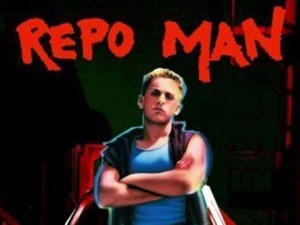There’s been plenty of talk about the U.S. housing crisis, foreclosures rising to record levels during the recent recession. But car buyers also struggled to pay their bills and keep the repo man from showing up at their door.
The good news is that loan delinquencies fell sharply since the depths of the nation’s economic downturn and repossessions have likewise dropped sharply. In fact, they hit a 12-year low in 2012, says Manheim Consulting. But another study warns that the trend might soon reverse itself.
For the first time since 2009, the number of 60-day auto loan delinquencies increased during the fourth quarter of 2012, warns Experian Automotive, and with lenders writing more of the risky, subprime car loans that slammed the industry during the recession, the repo man could soon get busy again.
For the time being, he’s sitting on his hands, repossessions fell by 27.6% during the fourth quarter, says a new Experian report, accounting for just 0.46% of outstanding auto loans. That was true no matter who issued the loan, banks, credit unions, “captive” or automaker-operated finance companies, or other lenders.
“Overall, our Q4 analysis shows that the auto lending market is extremely healthy,” says Melinda Zabritski, director of automotive credit for Experian Automotive. “Of course, you never want to see an increase in delinquencies, but when you take a step back and look at the market compared to where it was three years ago, we still have remarkable stability.”
For now. But Experian’s new report also raises some flags. Those 60-day delinquencies are up, albeit ever so slightly, from 0.72% during the fourth quarter of 2011 to 0.74% during the final three months of 2012. That was nonetheless the first rise since Q4 2009.
That’s enough to worry some observers, including Manheim’s chief economist Tom Webb who predicts repossessions could increase by 26.9% through 2015.
Industry observers say that if this happens the industry may have only itself to blame, however. In the years leading up to the recession, lenders seemed to be willing to offer cash to just about anybody. Indeed, Japanese automaker Mitsubishi nearly went broke when it was burned by a NINJA loan program aimed at attracting young, first-time buyers. That’s short for No Income, No Jobs or Assets, and many of the folks who fit that description were pleased to get a free ride for a year – turning back the keys when the first payments were due.
Even with more conventional loans terms were loosened significantly, much as they were by housing lenders, creating an industry nightmare when the economy collapsed.
But automakers weren’t much happier with what followed. Lenders went to the other extreme. At times even potential car buyers with top credit scores could not line up loans. And the lease deals that had become a major part of the industry all but completely dried up for everyone. The lack of lending helped drive the U.S. automotive market into its biggest downturn since the Great Depression.
On the positive side, that meant only the most qualified and responsible customers were signing for loans. And, in turn, delinquencies plunged by 31.8% between 2009 and 2012 – last year only 1.3 million vehicles being repossessed, according to Manheim, the lowest level in a dozen years.
But even as repos fell, lenders were loosening terms last year, a factor in the unexpectedly strong revival of the U.S. automotive market which soared to 14.5 million last year. Even more credit will be needed to fuel an anticipated surge that could see 15.5 million for 2013.
The question is whether lenders will return to the practices that caught up with them during the recession or if more qualified buyers will re-enter the market. The slight rise in fourth-quarter repossessions gives reason for economists like Manheim’s Webb to be worried.

